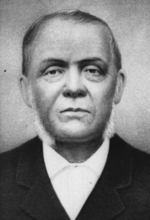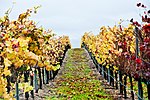Sisquoc River
Los Padres National ForestNatural history of Santa Barbara County, CaliforniaRivers of Santa Barbara County, CaliforniaRivers of Southern CaliforniaSan Rafael Mountains ... and 1 more
Wild and Scenic Rivers of the United States

The Sisquoc River is a westward flowing river in northeastern Santa Barbara County, California. It is a tributary of the Santa Maria River, which is formed when the Sisquoc River meets the Cuyama River at the Santa Barbara County and San Luis Obispo County border just north of Garey. The river is 57.4 miles (92.4 km) long and originates on the north slopes of Big Pine Mountain, at approximately 6,320 feet (1,930 m). Big Pine Mountain is part of the San Rafael Mountains, which are part of the Transverse Ranges.
Excerpt from the Wikipedia article Sisquoc River (License: CC BY-SA 3.0, Authors, Images).Sisquoc River
Foxen Canyon Road,
Geographical coordinates (GPS) Address Nearby Places Show on map
Geographical coordinates (GPS)
| Latitude | Longitude |
|---|---|
| N 34.903055555556 ° | E -120.3125 ° |
Address
Foxen Canyon Road
Foxen Canyon Road
California, United States
Open on Google Maps






